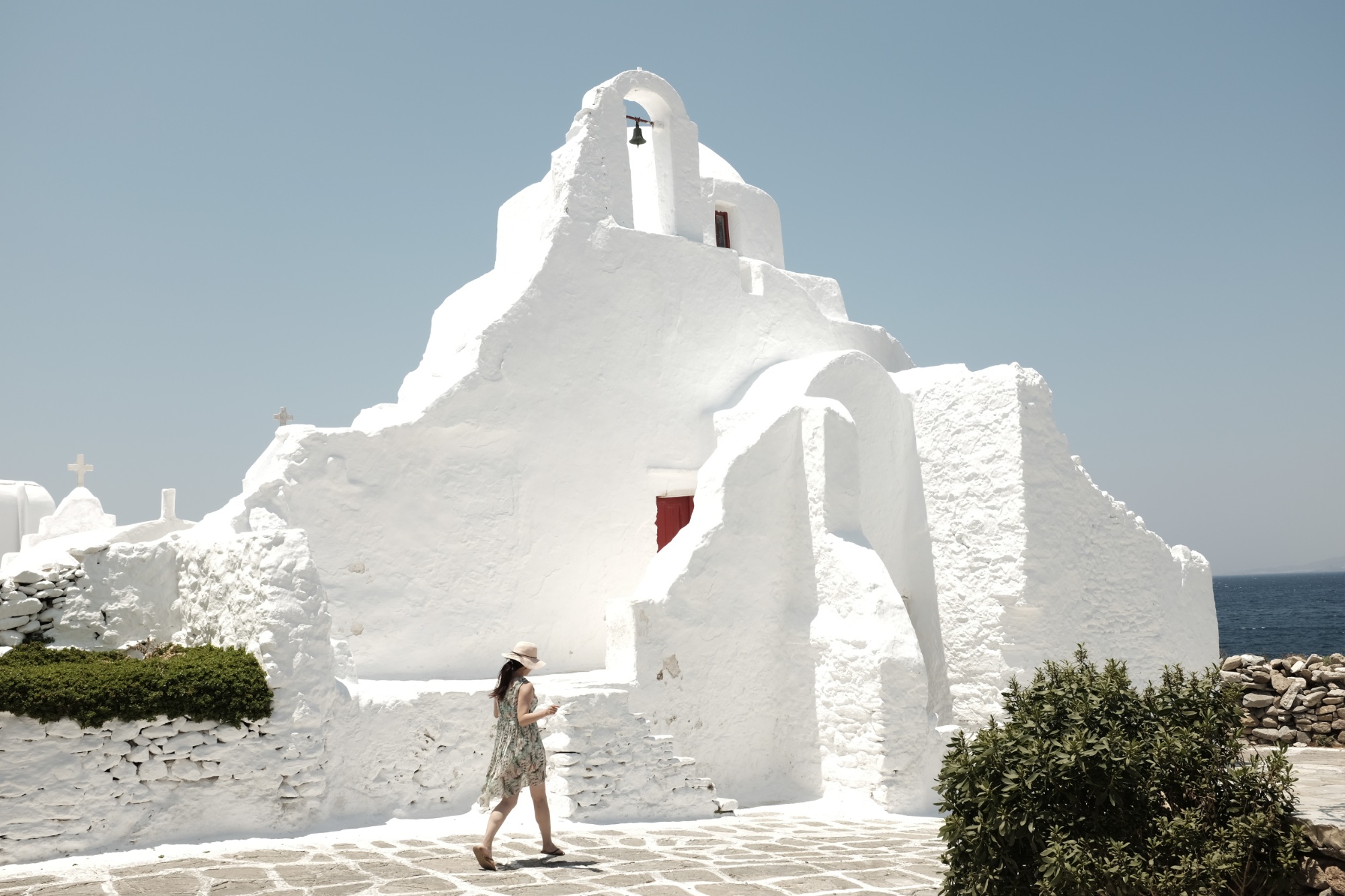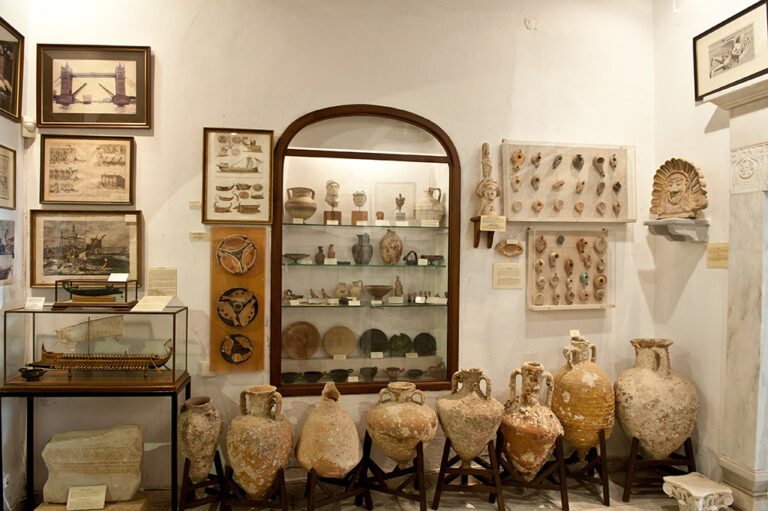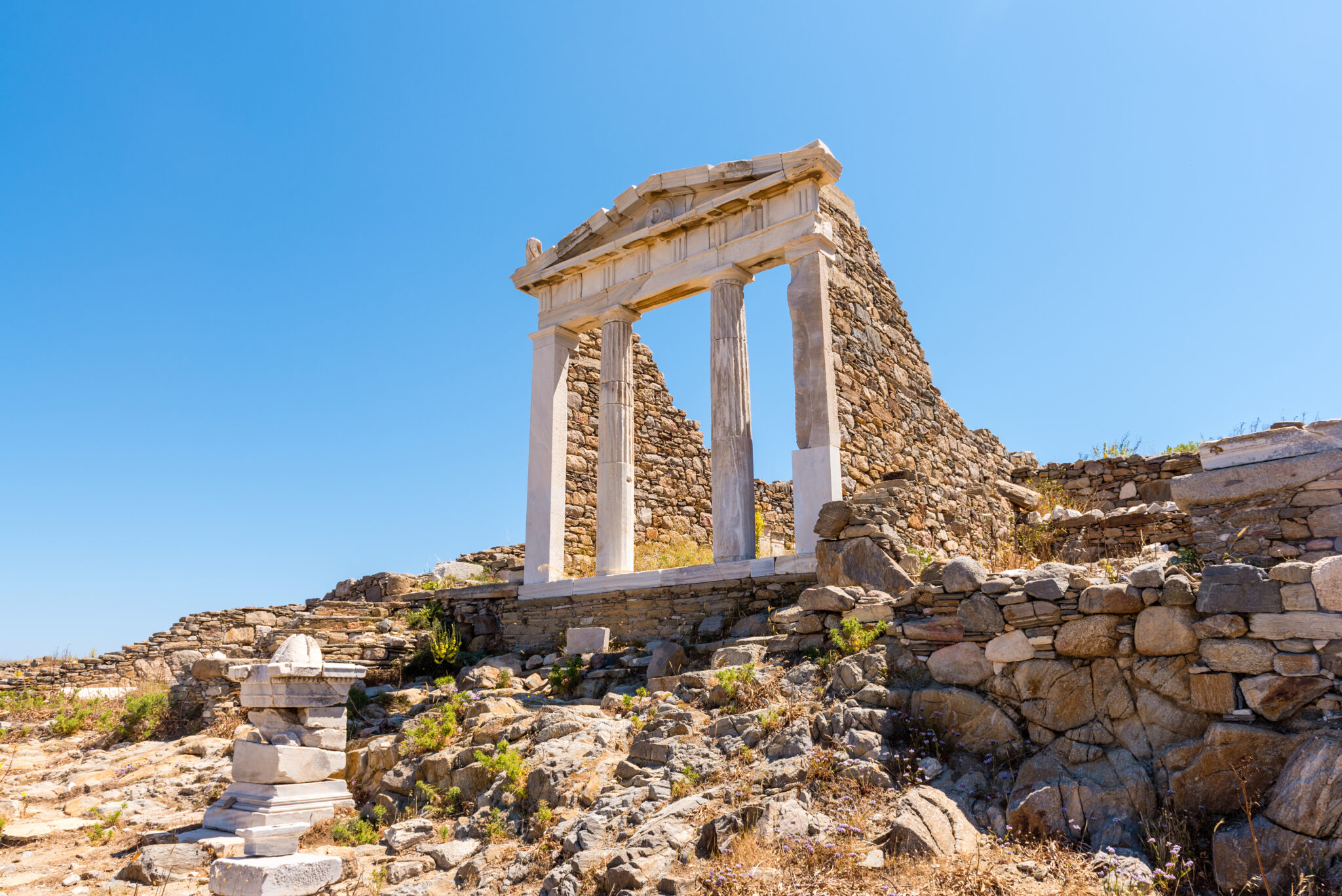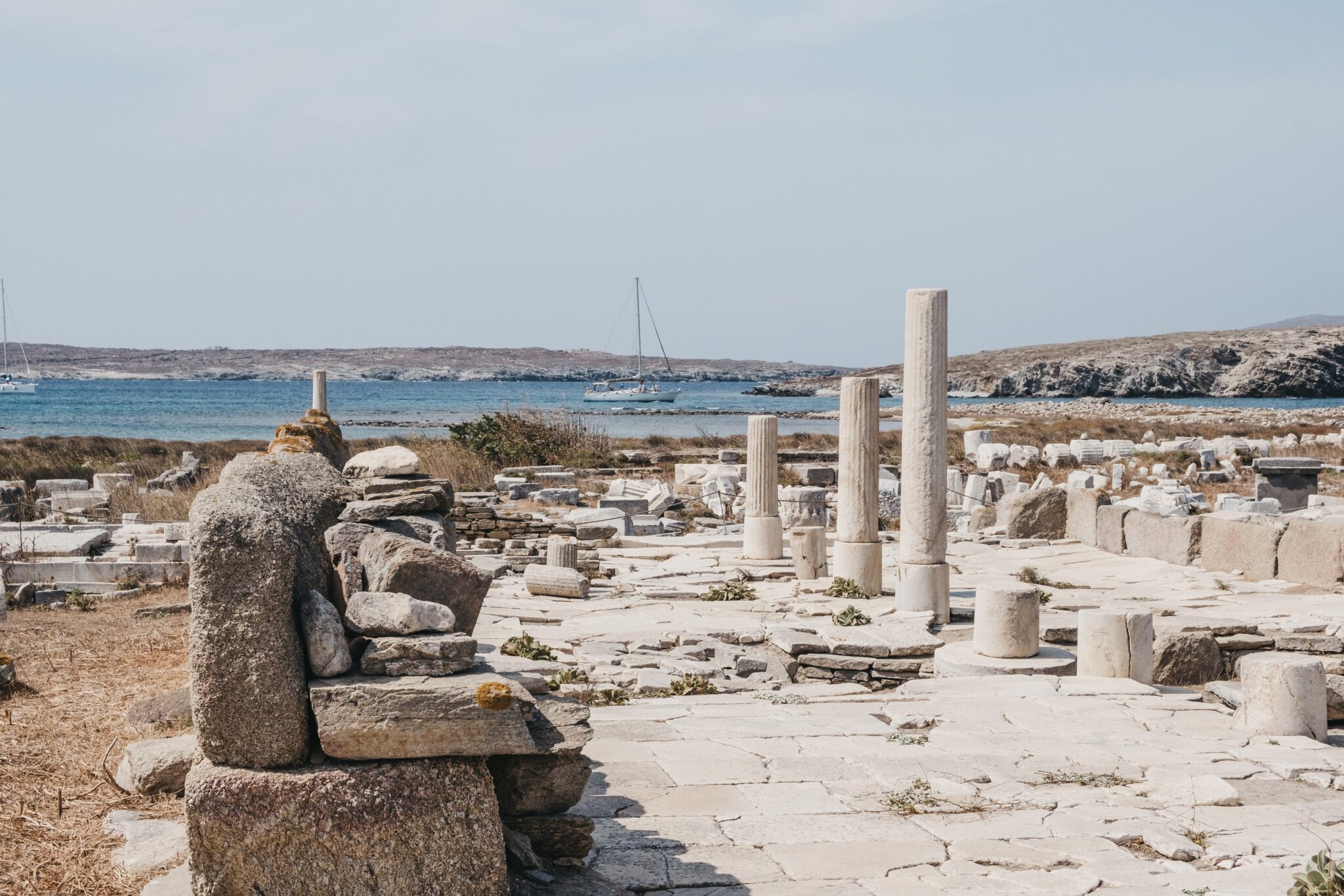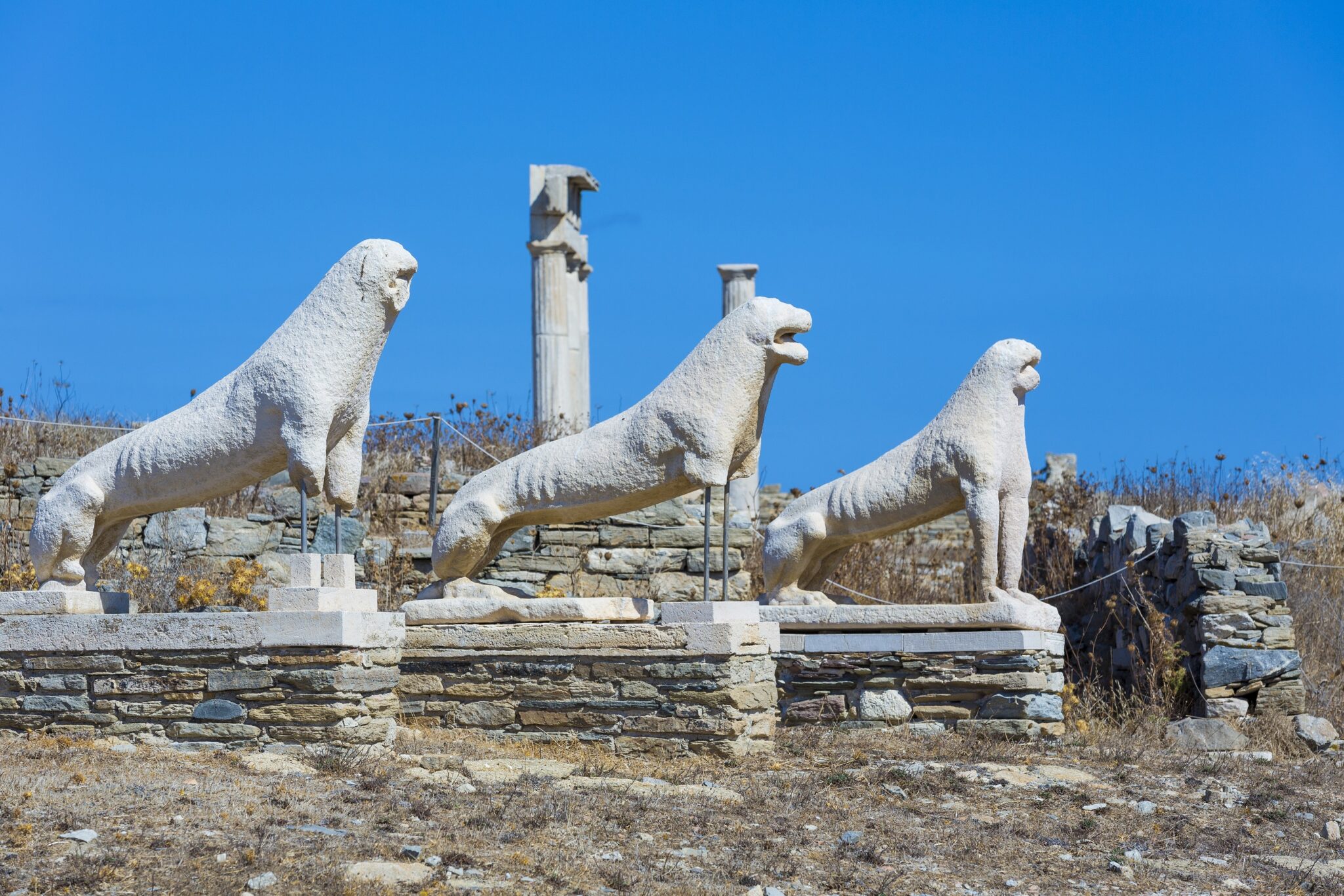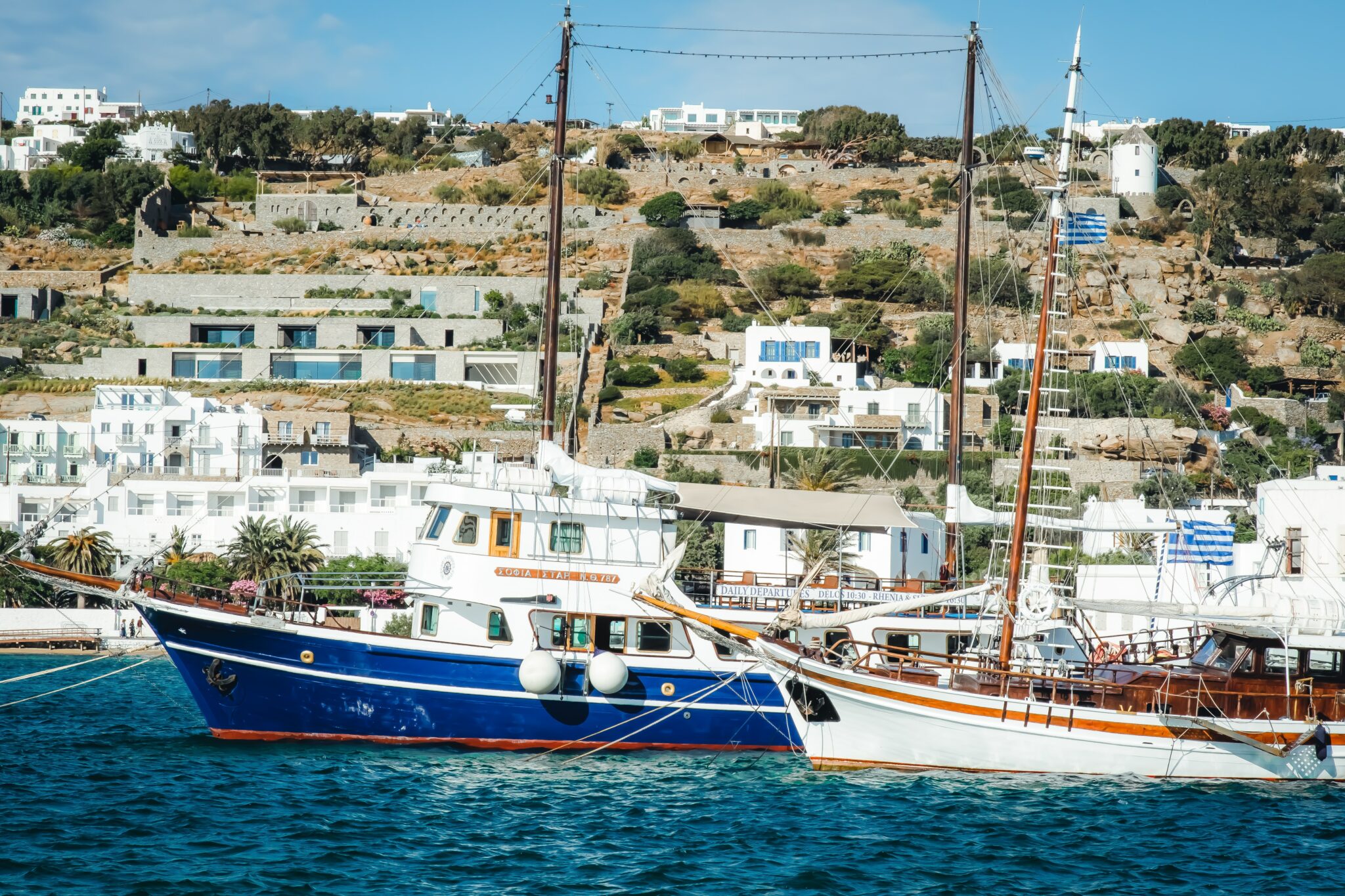Explore Ano Mera, a quaint village untouched by tourism, where local smallholders and farmhouses add to its rustic charm. Visit the Monastery of Panagia Tourliani, steeped in history and religious significance.
Venture to the sacred island of Delos, an amazing archaeological site showcasing the intertwined fates of Delos and Mykonos. Finally, embark on a boat excursion to the surrounding islands and islets, where pristine beaches, captivating caves, and prime snorkeling spots await. Discover the enchanting secrets Mykonos and its neighboring islands have to offer.
Keep in mind that several must-see attractions in Mykonos are located outside the town center, so renting a vehicle is essential; consider a reputable car rental service for a smooth and worry-free experience.
Ano Mera
The only other village of note on the island, Ano Mera means the upper side, and it has remained largely unaffected by tourist development. Most of the locals are smallholders and the surrounding fields are scattered with farmhouses. In the central square there are a number of taverns known for grilled meat.
Looming over the village is the imposing Monastery of Panagia Tourliani. It is believed to have been founded by two monks from the Panagia Ekatontapyliani of Paros in 1542 at the site of an old church and it is dedicated to the Assumption of the Virgin Mary. The miraculous icon of the Virgin was found on the coast at Tourlos, hence the name of the monastery, and on August 23rd it is celebrated with a festival in her honour.
Delos
The sacred island of Delos is at the centre of the Cyclades, in the heart of the Aegean Sea and it is from where the islands take their name; they circle Delos. One of the most important archaeological sites in the Mediterranean, Mykonos’ fate has always been closely linked with its tiny neighbour. According to mythology, it was in Delos that Leto gave birth to Apollo and Artemis. The Apollonian sanctuary reached its peak in the 5th century BC, gathering a large number of the most important people from all over the then known Greek world.
After 166 BC the Romans, who conquered the Aegean, made Delos the largest trading centre in the empire and the island was home to 30,000 people. In 88 BC, however, Delos was attacked and plundered by the Pontian king Mithridates, and yet again in 69 BC by his allies the pirates of Athenodorus. Subsequently, it fell into ruin and suffered from many thefts. The excavation of the site began in 1873 by the French archaeological school and is still ongoing.
Delos is only 5 km long and it is worth the wind buffeted climb to Mount Kythnod (113 m high) to look over the Aegean and the surrounding islands of Mykonos, Naxos, Paros, Syros and Rhenia. Delos is uninhabited and it is forbidden to stay there overnight. Excursion boats depart from the old port of Mykonos and the crossing takes 30 minutes. (Tel. Archaeological Museum: 22890 22259)
By boat to the islands around Mykonos
Look at the map of Mykonos and you will see a small archipelago of islands and rocky islets. Rhenia is the biggest with a coastline of 43 km and many bays and sandy beaches. Day trip boats moor at the two harbours of Kasari and Generali. The small island of Tragonisi is mainly inaccessible but there is a sheltered cove to the northeast with an impressive cave. About 5km further south east lie a group of islets known as Ktopodia which are prime snorkelling spots.



